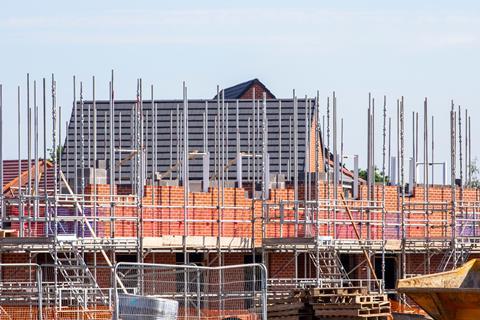Quarterly figures hailed as evidence of Boris bounce, despite January showing dip in output
Housing output grew by 2.6% in the three months to January, according to latest figures from the ONS. These have been hailed in some quarters as further evidence of the purported “Boris bounce” experienced in the housing sector since the election.

The 2.6% quarter-on-quarter growth represented an improvement on growth of just 0.4% in the three months to December, and took total housing output for the quarter to £3.6bn.
However, closer analysis of the figures shows that the steep rise is down to the fact that a sharp drop in housing output experienced in October has now fallen out of the three-monthly figures – meaning January’s quarterly performance effectively starts from a lower base.
In fact the seasonally adjusted output figures for January specifically show that housebuilding output actually fell in the month by 1.1%, largely because of a sharp drop in “public” housing construction. Private housing output on its own also fell, by 0.4%, to £3.07bn, seasonally adjusted.
Clive Docwra, MD of construction consultant McBains, said the industry would give a cautious welcome to the figures, but that they reinforced that underlying long-term growth was still fragile, particularly in light of concerns over the impact of Coronavirus on the economy.
“Clarity on growth over the next few months is doubly important as the impact of coronavirus is an unknown quantity,” he said.
“If workers have to self-isolate, this will trigger a dip in activity, and if financial market values continue to fall then this will also have an impact on investors’ capacity to commit to new projects.”
Despite the dip in January, Gareth Belsham, director of the national property consultancy and surveyors Naismiths, said the data showed that the “Boris bounce lives on in construction, if nowhere else”, with “developers rushing to restart and re-energise mothballed projects”.
Despite this optimism, Belsham admitted that the spectre of coronavirus meant it was possible the 2.4% quarterly rise may end up as a “high water mark”.











No comments yet